Caribbean script. Part 3
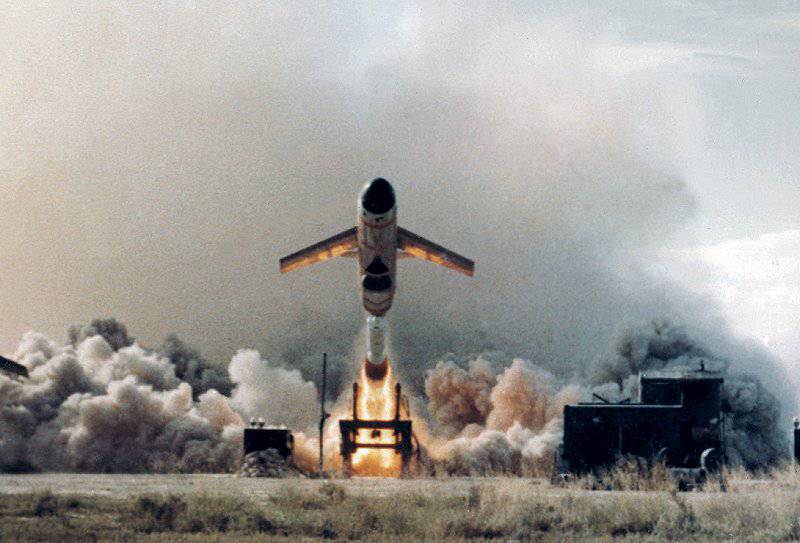
After "fulfilled" medium-range and long-range missiles aviation, in Europe came the turn of front-line bombers and tactical missiles. The land battles in the FRG began with an intensive exchange of missile and air strikes. Squadrons of front-line bomber, fighter-bomber and tactical aircraft rose into the air. Airplanes with tactical nuclear bombs attacked army headquarters, march units, airfields, and key infrastructure facilities. To cover the carriers of tactical nuclear bombs and defense from attacks by enemy bombers, fighters took to the air. A typical example of the actions of front-line bombers of the 16th Air Army was the destruction by nuclear bombs from IL-28 of the West German airfields Gibelstadt and Kitzingen.
The American, British, French, and West German tactical aviation, which suffered heavy losses at the airfields, failed to fully cover its ground units from air strikes. The French Air Force provided some help to the NATO forces in Germany, since French airfields suffered less from nuclear bombardment.
Two dozen advancing motorized infantry and tank divisions of the GSVG and six divisions of the GDR army, in addition to barrel artillery and MLRS, cleared the way for tactical missiles "Luna" and R-11. Soviet troops used the available tactical weapon be ahead of the curve, otherwise superiority in armored vehicles and artillery could be devalued by the advantage of NATO in tactical atomic weapons.
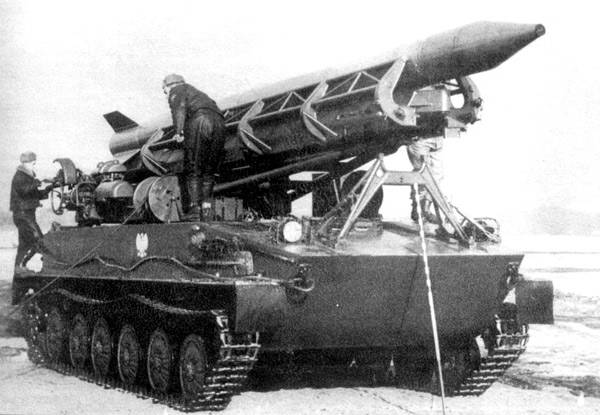
A fierce land battle, which lasted more than a day, broke out in the area of the so-called “Fulda corridor” - the passage between the Spessart and Vogelsberg mountain ranges. This route was the shortest for the offensive between the GDR and the Federal Republic of Germany. In the battles for this section, the US ground forces for the first time used 203-mm nuclear missiles M422 with 5 power kt and "nuclear recoilless" M29 Davy Crockett. The 155 mm M29 recoilless guns were attached to US infantry regiments deployed in Western Europe. The gun fired the M388 above-caliber projectile with the nuclear warhead W-54Y1 with a power of 0,1 kt at a distance of up to 4 km. To increase mobility, the 155-mm M29 recoilless guns were mounted on jeeps and light tracked vehicles.
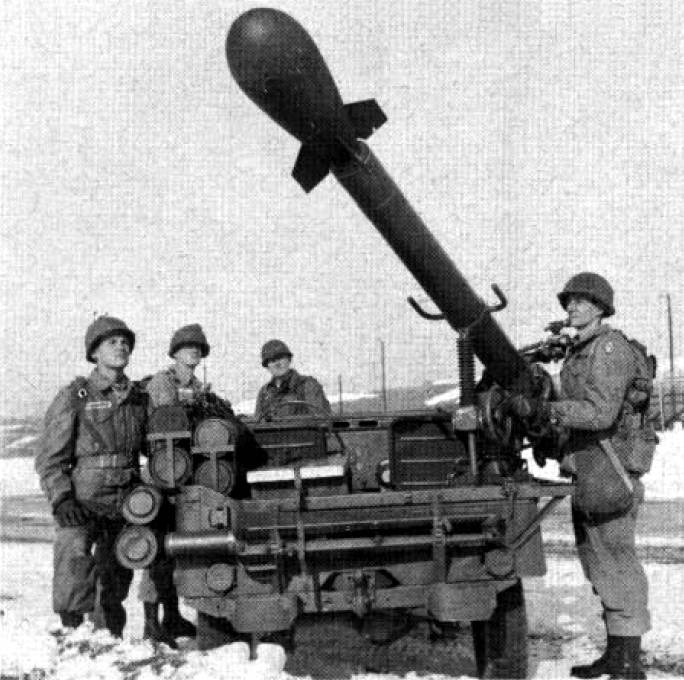
With shots, Davy Crocket managed to repel several Soviet tank attacks, and the 203 mm M55 self-propelled guns with the help of nuclear projectiles waged an effective battery combat. After the losses in the 39 th and 57 th motorized rifle Guards divisions had exceeded 50%, the 8 th Guards Army commanders ordered the launch of four Luna missiles on the defenders of the American infantry units. Only after nuclear strikes with tactical missiles, American defense was hacked.
The Soviet forces in West Germany were opposed by eight divisions of the US Army, as well as four British, eight Belgian, Dutch, Danish and German divisions. The warring parties actively used tactical nuclear charges. Only a day on October 30 in Germany thundered around 60 nuclear explosions. On the way of the advancing tank wedges of the 8-th Guards, 20-th Guards, 3-th Combined Arms and 1-th Guards Tank armies several nuclear bombs were blown up. They were laid in specially prepared wells at the intersections of roads or in places convenient for creating impassable destruction. In addition to debris and fires as a result of ground-based nuclear explosions, zones of intense radioactive contamination were formed. Our advancing units had to look for ways to circumvent debris and radiation spots, all of which seriously reduced the pace of the offensive. When it became clear that the American troops could not hold their positions, the explosions of nuclear land mines made the Fulda Corridor impassable for tanks and wheeled vehicles.
On the morning of October 31, the 2-I Guards Tank Army and the 20-I Guards Combined-Arms Army in several places forced the Elbe and advanced towards Hamburg in battles. The 3 Army I was bogged down in the positions of the 1 British Corps, supported from the flank by the Belgian divisions. The parties actively used tactical nuclear weapons, but this only exacerbated the stalemate. The course of the hostilities in the FRG was succeeded in reversing after the breakthrough of the 2-th Guards Tank Army of the German defense near Uelzen by the units. In the breakthrough were introduced two tank divisions of the 20-oh combined arms army. 1-I Guards Tank Army broke through the defenses at the junction between the American and West German divisions, and defeated parts of the 5-American corps in a head-on battle, made a throw into northern Bavaria. Under the threat of encirclement from the north, with the prospect of entering into battle three Polish and two Czechoslovak armies, NATO forces were forced to retreat beyond the Rhine. After the evacuation of the Rhine in order to stop the advance of the Soviet divisions, a massive strike by MGM-5 Corporal tactical missiles was inflicted on their immediate rear.
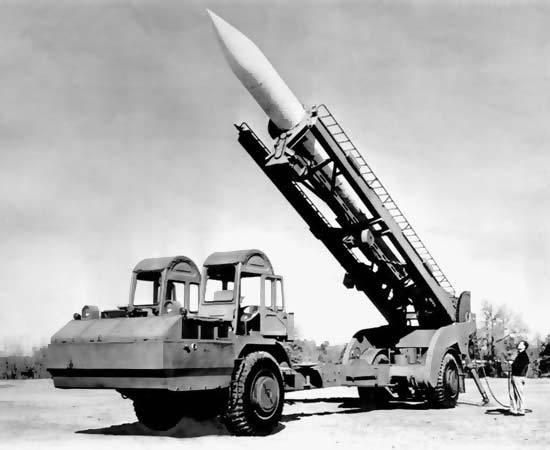
The launch range of the Corporal tactical missiles with a liquid-propellant rocket engine operating on hydrazine and red fuming nitric acid reached 139 km. The missile was carrying a nuclear warhead W-7 20 power kt. The use of radio command correction on the trajectory significantly increased the accuracy, but at the same time complicated the missile complex. Nuclear Corporal tactical missiles in 1962 in Europe were in service with two British missile regiments and eight American missile battalions.
Nevertheless, the use of nuclear tactical missiles did not help to contain the offensive of the Soviet troops, and by the November holidays they had reached Stuttgart, surrounding the 2 German Corps. The troops of the Bundeswehr in the area were trapped in a cauldron between Czechoslovak and Soviet units, and after two days were completely defeated.
Far less successful were the Warsaw Pact countries in the Balkans. Two tank and two motorized rifle divisions of the Soviet Southern Group of Forces, with the support of the Bulgarian and Romanian units, launched combat operations against the Greek and Turkish armies. Turks and Greeks who hate each other were forced to fight shoulder to shoulder against the common enemy. On the southern European flank of NATO forces had superiority in the air. Traditionally, modern equipment was primarily sent to the GSVG, and in the YUGV, the most modern fighters were the regiment MiG-19С. One and a half hundred MiG-15bis and MiG-17 were used as light attack aircraft.
In the Air Forces of Turkey and Greece, on the contrary, there were a significant number of supersonic F-104, F-100 and F-84 fighter jets. Great assistance to the European NATO allies was provided by the US 6 fleet. By the beginning of the exchange of missile strikes, most of the American warships operating in this region were at sea and had avoided destruction in the ports. The carrier-based aircraft from the Forrestal (CV-59) and Franklin D. Roosevelt (CV-42) aircraft carriers launched air strikes against the operational rear of the Soviet, Romanian and Bulgarian forces and supported the Turks and Greeks on the battlefield.
The actions of the IL-28T torpedo bombers and the Tu-16К-10 rocket carriers, in view of the total domination of the enemy in the air and the effective radar patrol, were not successful. Most of the IL-28T was shot down even on the approach, and the rocket carriers managed to sink only the Boston missile cruiser (CA-69) and destroy one of the aircraft carriers. After the American carrier-based bombers dropped several atomic bombs on the operational rear of the UGV, the front line in the Balkans stabilized.
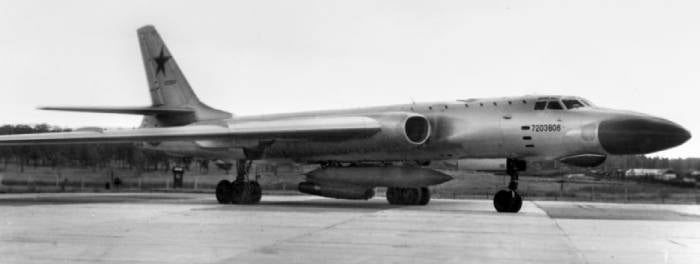
In northern Europe, the war was with varying results. Initially, Soviet troops were successful. At the first stage of successful naval and airborne landing operations, a significant part of Denmark was captured. After the evacuation of NATO forces beyond the Rhine, several Danish divisions that were isolated, received several nuclear attacks by R-11 missiles. After that, part of the Danish troops laid down their arms, and part was evacuated by sea. The capture of Denmark allowed the use of force fleet, frontline aviation and ground forces against Norway.
The Baltic Fleet during the night battle with 2 on November 3 in the Danish straits managed to win a major victory. The British destroyers and two groups of Danish and German torpedo boats attempted to carry out a raid operation, but were detected in time and were attacked by the division of the missile boats BF Ave. 183Р. Within ten minutes, three British destroyers were sunk and two more were seriously damaged. Several enemy torpedo boats were destroyed by artillery fire of Soviet destroyers. In this case, the effect of surprise was that when planning an operation, Soviet rocket boats were not taken into account, and the NATO admirals had no idea how effective an anti-ship missile could be P-15.
The Soviet troops in the Arctic could not achieve their objectives. Marine and airborne landing forces in Norway managed to capture only small bridgeheads. The Norwegians had a very serious resistance, only after the Soviet diesel-electric submarines, pr.611AV, destroyed the Bodø and Orland airbases with the P-11F missiles, and the attacks of the F-86F and F-84 bombers stopped. However, after the liquidation of the Norwegian air bases, deck aircraft from the American aircraft carriers Entempraise and Coral Sea and the British Ark Royal and Hermes came to the aid of their allies. Due to the limited radius of action, the Soviet MiG-17 and MiG-19 were not able to protect the paratroopers from bombardment. Nevertheless, the Soviet troops managed to seize the southern part of Norway, which facilitated the exit of the Fleet forces in the North Sea.
Simultaneously with the withdrawal of troops beyond the Rhine, the Americans showed serious determination not to allow the further advance of the troops of the Warsaw Pact countries to the west of Europe. In the early days of the conflict in France from Fort Jackson (South Carolina), the military transport aviation deployed the 101-I air assault division. Mobilized passenger airliners were used to send 4 Infantry Division troops to the British Isles from Texas. American soldiers received equipment, armament and equipment from pre-prepared army warehouses. 3-4 took 24 hours to decommission and bring the equipment received from the warehouses to operational status and combat coordination of the units. Convoys loaded with equipment and personnel of several tank and infantry divisions quickly left the United States in the direction of Europe.
In turn, units of 5 and 6 of the Guards Tank Armies, 7 of the Tank and 11 of the Guards Combined Arms Army were pulled up to Germany from the territory of Poland, the Baltic States, Ukraine and Belarus. However, the redeployment of Soviet troops was slower than the generals would have liked. This was due to the destruction of the railway communication of Eastern Europe. The troops had to make long marches, overcoming the zones of radioactive contamination, strongly stretching along the roads, spending fuel and equipment life. As a result, the transfer of reserves greatly stretched over time, and neither side was able to get a decisive advantage. By November 10, the war took on a positional character.
In Asia, the advancement of North Korean and Chinese troops on the Korean Peninsula was halted by tactical nuclear weapons. The Soviet command refrained from the participation of the ground forces of the KVDO in the hostilities in Korea, but provided assistance by air. To reinforce the Sino-Korean grouping, an IL-28 front bomber regiment and two MiG-17 fighter regiments were sent. After a lull, the defense of the American and South Korean troops was hacked by the nuclear strikes of the Mars and Philin tactical missile systems. One battalion of these missiles was covertly shipped to the DPRK. The management of the launches of tactical nuclear missiles and the planning of strikes was carried out by the Soviet command.
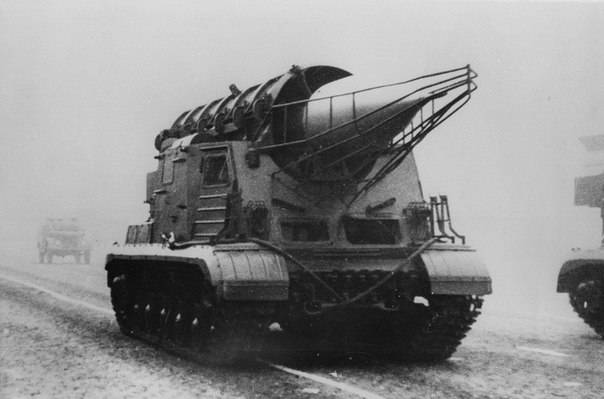
After the North Korean and Chinese Thirty-Fours, IS and self-propelled guns broke through the US-South Korean defense between Yonchon and Chorvon, passing Seoul from the east, Zentu-Chinese troops stormed the partially destroyed American Osann air base, which was in Zapuzhnumuzhnomu, Zapuzhniyu, Zhukosha, Zhukun-Tsuk On November 60, as a result of the seizure of Suwon, the capital of the Republic of Korea, Seoul and the port of Incheon were surrounded by land forces by the DPRK and the PLA.
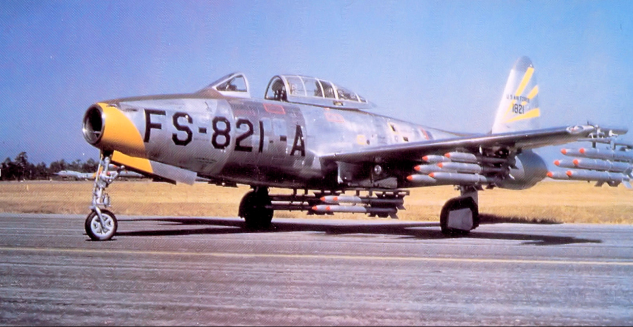
Even nuclear strikes did not help to stop the offensive from the north, they were carried out by tactical fighters F-84G, based at Kunsan airbase in the western part of the Korean Peninsula on the coast of the Yellow Sea 240 km south of Seoul, and tactical missile complexes Onest John. Cruise missiles MGM-13 Mace, launched from Okinawa along strategic North Korean targets, also had no particular influence on the course of military operations. In response, nuclear territory was once again subjected to nuclear bombing. Among other objects, the thermonuclear bomb dropped from the Tu-16A destroyed the large port of Nagasaki on the south-west coast.
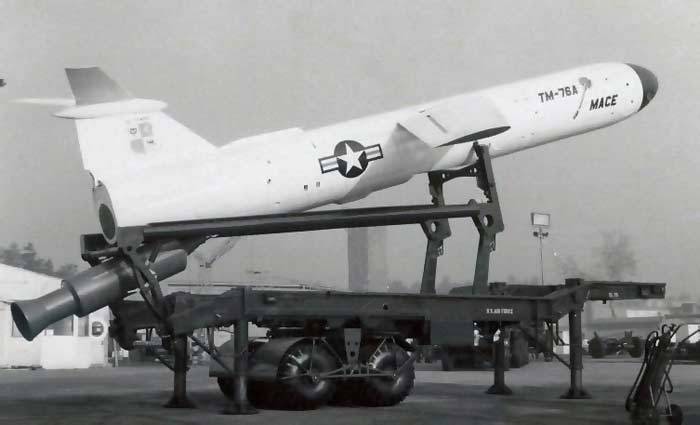
The actions of the Chinese H-5 and a nuclear bomb dropped from the Soviet IL-28, the American Kunsan airbase with the capital shelters for aircraft and concrete runways with a length of 2700 meters was removed from the game. The command of the troops of the DPRK and the PLA, regardless of the losses, brought into the battle all the new forces. Military units made marches through foci of radiation contamination without any means of protection, after which they rushed to the frontal attacks on enemy fortified positions. On the mountain road in the Gangwon area, a North Korean special forces unit, secretly landed from the An-2 aircraft, managed to capture and hold up to the main forces approach two M203 towed howitzer and a special conveyor for nuclear shells. As a result of this brilliantly conducted operation, two M115 nuclear projectiles fell at the disposal of Kim Il Sung.
After the destruction of the Kunsan airbase in South Korea, the Americans attempted to compensate for this loss with military aircraft based in Japan and on aircraft carriers, but they were linked by Soviet aircraft. The American troops left without air support fled, and they began an emergency evacuation by sea from the ports of Incheon and Chinhai. The United States refused to continue the struggle for the Korean Peninsula, although it was possible to land in the rear of the advancing communist armies of the landing of the 2 Division of the Marine Corps from Guam. The main reasons for refusing further struggle for Korea were the heavy losses of the American troops, the appearance of tactical nuclear weapons and the enemy’s severe radiation contamination of a large part of the Korean Peninsula, as well as difficulties in the delivery of cargo by sea due to the high activity of the submarine forces of the Pacific Fleet.
Dozens of Japanese F-86s and Soviet MiG-17 and MiG-19 came together over the Sakhalin and Hokkaido air battles. Soviet fighters tried to cover the exit to the positions of submarines. In turn, the Japanese defended anti-submarine aircraft and coastal targets. The Soviet command refused from the planned landing on Hokkaido due to the impossibility of providing constant air cover and guaranteed supply of reserves and supplies in conditions of considerable superiority of the US Navy in surface ships. The situation became seriously complicated after the American aircraft carrier "Kitty Hawk" (CV-12) escorted by missile cruisers and destroyers who had escaped the destruction of the R-63 R-XNUMX in Yokosuka approached the area.
In the afternoon, 2 in November, the aircraft carrier Constellation (CV-64), which joined the fleet a year ago and was going to connect with the main forces of the 7 US fleet, was sunk along with three destroyers by a nuclear torpedo from a diesel boat TOFA X. NUMX southeast of Hokkaido. The boat itself, which received minor damage, managed to break away from the pursuit of anti-submarine forces at nightfall, but, ironically, she died at the Soviet minefields exposed near the coast of Sakhalin, awaiting the US-Japanese naval assault.
A few days after the beginning of the conflict began active hostilities at sea. On the night of 6 on November 7, the airbases, ports and cities on the east coast of the United States were attacked by cruise and ballistic missiles from Soviet nuclear submarines, 659 Ave. and 658 Ave. Cruise missiles were also attacked by the American naval base in Hawaii - Pearl Harbor. Even taking into account the fact that rocket launches were carried out at night, the survival rate of the boats was low. Of the three boats of the 659 Ave. with cruise missiles participating in the attacks, all were sunk, and of the two SSBNs of the 658 Ave, one survived. In addition to the boats with ballistic missiles in the Soviet fleet in the 1962, there were 10 diesel-electric submarines with cruise missiles P-5. Five of them managed to shoot at targets in Scandinavia, Turkey and Japan.

At the end of October, six submarines Ave 1962 operated in the ocean of 627. Initially, their targets were the ports and naval bases of the enemy, it turned out to work out five torpedoes with nuclear torpedoes. On November 1, the Soviet nuclear submarine, 627 Ave., destroyed two berthing facilities in Singapore along with moored British and American warships with two nuclear torpedoes. The US and NATO antisubmarine forces succeeded in destroying one nuclear submarine on the approach to Gibraltar, and another, forced to surface in the Pacific Ocean due to the malfunction of the reactor after completing the mission, was sunk by Japanese anti-submarine aircraft Р-2 Neptune.
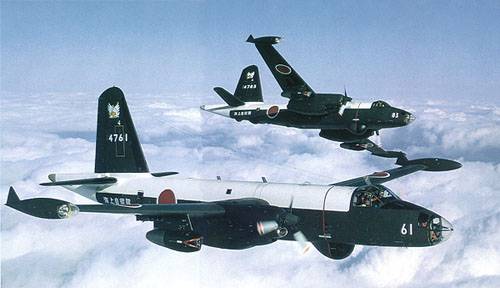
The Americans, taking advantage of the overwhelming advantage of NATO in large warships, made every effort to seize the initiative at sea. In addition, the US Navy was actively used to support ground forces in Europe and Asia. American SSBNs that advanced to the lines of launching SLBMs continued to deliver nuclear strikes on Soviet targets. One American missile boat shot out from the Mediterranean, and the other from the North. The result of these attacks was the destruction of a number of Soviet airfields, naval bases and key transportation hubs.
In the USSR Navy, in addition to relatively few submarines in the 1962, there were about 200 torpedo submarines Ave.611, 613, 633 and 641. Before the first nuclear explosions at sea, more than 100 Soviet diesel boats could be brought out. After the beginning of the conflict, part of them was destroyed by anti-submarine forces, however, the remaining crews made every effort to neutralize the US surface fleet. For Soviet submarines and naval aircraft carrying aircraft, the priority targets were American aircraft carriers. The main problem of the Soviet submariners was the lack of information on the whereabouts of the American carrier strike groups. Therefore, the command of the Navy of the USSR was forced to form the so-called "veil" in the path of the alleged pursuit of American fleets. During the fighting at sea, the sides actively used nuclear torpedoes and depth bombs. At the cost of the death of 70 diesel and nuclear submarines and 80% of sea-launched missile and mine-torpedo aircraft, it was possible to sink three strike aircraft carriers (including the newest atomic Enterprise CVN-65) and a little more than two dozen destroyers and cruisers.
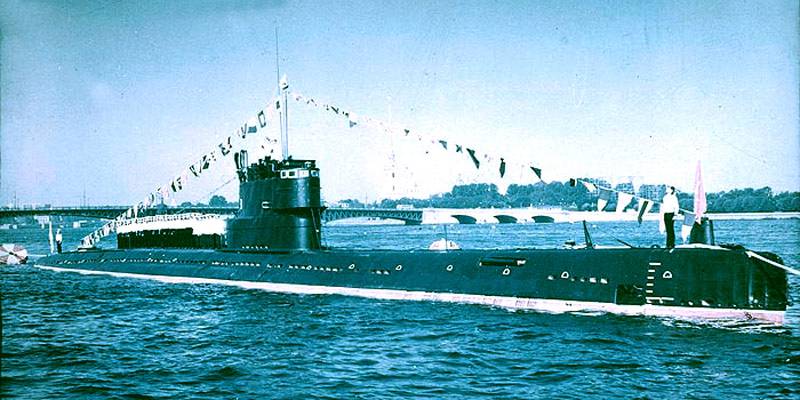
In the "veils" on the route of NATO squadrons, mainly the most numerous type of boats were involved in the USSR Navy - pr.NUMX, and also boats pr.613 and diesel missile submarines, which spent their SLBMs on targets in Europe. Larger boats pr.633 and 611, as well as nuclear ships pr.641 operated on ocean communications. The use of torpedoes with nuclear charges allowed, to some extent, to devalue the enemy’s multiple superiority in surface ships. In addition, nuclear torpedoes in some cases proved to be very effective against port facilities and naval bases. After 627 days after the start of the conflict, the Soviet diesel submarine, 10, managed to get close to the entrance to the Panama Canal and destroy the lock chambers with an atomic torpedo. As a result, this seriously hampered the maneuver of the American fleet. Several Soviet diesel submarines also managed to torpedoes with a nuclear filling to destroy a number of ports on the US coast, along with troop transports standing under loading, which seriously hampered the sending of troops to Europe. Some diesel-electric submarines, which had avoided destruction by anti-submarine forces, were forced to intern at the ports of the neutral states of Asia, Africa and Central America after the exhaustion of supplies.
Soviet surface ships operated mainly on their own coast, conducting anti-submarine and anti-amphibious operations. An attempt by four Soviet cruisers of the 68-bis project and two old cruisers of the 26-bis project, which were accompanied by destroyers, to provide artillery support to the Soviet landing forces in Norway was stopped by the actions of the American carrier-based aircraft.
As a result of the response of the American strategic and carrier-based aviation and nuclear-powered ballistic-missile submarines, about 90% of coastal airfields and almost all the bases of the Soviet fleet were destroyed. Huge damage was inflicted on the military infrastructure and communications system. As a result, three weeks after the start of the conflict, the fighting at sea almost subsided. The same thing happened on land theater, due to the depletion of the parties' capabilities, the exchange of strategic and tactical nuclear strikes on land ceased in 15 days.
The losses of the parties to the conflict amounted to about 100 million. killed during the year, another 150 million. were injured, burned and received significant doses of radiation. The consequences of hundreds of nuclear explosions in Europe made a significant part of it unsuitable for life. In addition to huge areas of continuous destruction, almost the entire territory of Germany, more than half of the territory of Great Britain, Czechoslovakia, and Poland, significant parts of France, Belarus and Ukraine were subjected to the strongest radiation contamination. In this regard, the surviving population of countries in the zone controlled by NATO, were sent to southern France, Italy, Spain, Portugal and North Africa. Later, part of the population of Western European countries was shipped by sea to South Africa, South and Central America, Australia and New Zealand. The population of Eastern European countries was evacuated to the rural areas of the European part of the USSR, beyond the Urals, into Central Asia and into the Caucasus. The aggravated food problems were largely mitigated by the supply of meat from Mongolia.
In industrial terms, the USSR and the United States were thrown decades ago. Due to the inability to produce modern weapons in sufficient quantities in the Soviet Union and the United States began to massively return to the system, it would seem, hopelessly outdated military equipment. In the USSR, in order to make up for losses in tanks, several thousand T-34-85 tanks and ZiS-3 guns entered the troops, the Tu-2 dive bombers, the Tu-10 attack aircraft and the piston "strategic" Tu-4 returned to aviation. The Americans also returned later versions of the Sherman tanks, piston fighters Mustang and Corsair, twin-engine A-26 bombers, strategic B-29, B-50 and B-36 bombers.
After the termination of the active phase of hostilities from European countries, France, Italy and Spain, which were least affected by nuclear bombings, retained a certain amount of weight. The already shaky military and political influence of the states of the Old World was destroyed in the flames of nuclear war, and the process of decolonization sharply intensified, accompanied by an unprecedented slaughter of the white population in the former colonies. In the Middle East, the Arab coalition hastily put together an attempt to eliminate Israel by armed means. Left with virtually no outside help, the Israelis, at the cost of tremendous casualties, managed to repel the first attacks. But later most of the Jews were evacuated by sea to the United States and Arab troops occupied Jerusalem. However, peace in this part did not come, soon Egypt, Syria, Jordan and Iraq joined each other.
Oddly enough, in spite of the destruction, in many respects China has won from nuclear war. Chinese influence in the world has increased significantly, and in Asia it has become dominant. Virtually the entire Korean Peninsula and most of Japan were unsuitable for further residence due to severe radiation contamination. Taiwan and Hong Kong have come under Chinese control. Chinese military bases appeared in Burma and Cambodia. The Soviet leadership for the early replenishment of the military potential established on the territory of the PRC the production of nuclear weapons and a number of strategic weapons, while Mao Zedong managed to bargain for the condition that the division of military products would be done in half. Thus, China, which had become a “nuclear power” ahead of time, gained access to modern rocket technologies. In general, the military-political significance in the world of the USSR and the USA has greatly decreased, and the PRC, India, the Republic of South Africa and the countries of South America gradually began to become "centers of power".
Based on:
http://ns2.fmp.msu.ru/assets/files/theCaribbeancrisis.pdf
http://alternathistory.com/karibskii-armageddon-chast-i
http://alternathistory.com/sootnoshenie-yadernykh-sil-ovd-nato-na-moment-karibskogo-krizisa

Information